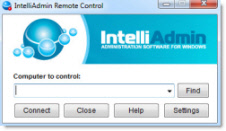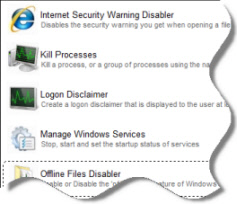DHCP 80/20 rule question
This was taken from another forum and i need some clarification for this setup.
I've noticed questions in both DNS/BIND/DHCP/WINS Issues and in some of the Server forums about DHCP redundancy. The best rule of thumb I've ever heard of is called the 80/20 rule. Here's how it works. DHCP
Server A is set-up with a range of 10.1.1.1 to 10.1.1.254. Excluded are 10.1.1.1 to 10.1.1.203. This leaves a range of 10.1.204 to 10.1.1.254 for Server A to assign to Subnet A, or about 20%. DHCP Server B is configured with
a range of 10.1.1.1 to 10.1.1.254, with exclusions of 10.1.1.204 to 10.1.1.254. This leaves Server B a range of 10.1.1.1 to 10.1.1.203 to assign on Subnet B, or around 80%. If Server B goes down, clients on Subnet B can then get an ip
from the exlusion range of Server A, and if Server A goes down, users on Subnet A can get ip's from the exclusion range on Server B. Hope this helps.
My question is, with this setup, if one DHCP server goes down, why would the second DHCP server then give out addresses from its excluded ranges? Is this
true/possible?
I have been tasked to setup DHCP redundancy but cant understand how the second server will pick up the slack from the first one going down.
Can someone please clarify this for me.
Your help is appreciated.
Angelo
December 29th, 2010 12:57am
In this case, exclusion means that you set up on Server A 80% IP addresses and on Server B 20% addresses but not as excluded on Server A.
You cannot set IPs as excluded because they will never be issued to DHCP clients.
In your case with 80/20 it should look like
Server A pool -> 10.1.1.204 to 10.1.1.254 (scope's pool, no IPs exclusion)
Server B pool -> 10.1.1.1 to 10.1.1.203 ( (scope's pool, no IPs exclusion)
both DHCP servers should be authorized and scopes should be activated to be able to issue DHCP leases to your clients. Redundancy in this scenario means that if one of them would fail, the second will still be issuing IP addresse (of course not for all devices
but 20% of them will be able to receive IP).
Other "redundant" solution for DHCP is scope configuration to 50/50 (similar to 80/20) or another.
You install 2 DHCP servers, authorize them. Configure DHCP scope(s) on one of them and often back up of %WINDIR%\SYSTEM32\DHCP folder.
In case of Server A failure you can simply restore whole DHCP database to your Server B where is set up DHCP service
Hope it clarified it a little bit moreRegards, Krzysztof
Free Windows Admin Tool Kit Click here and download it now
December 29th, 2010 1:43am
Thanks for the reply. It does answer some things. But, just to clarify, if i build a second DHCP server, authorize it, copy all the scopes from the first server and import them. Then, only when the first DHCP server fails, i then activate
the scopes on the second server. Is this what you meant in the second part of your answer?
December 29th, 2010 7:15pm
Yes, that's right. In this case you cannot have more than one DHCP server with the same IPs range active to prevent IP address conflict. You have only one server with active scope which issues DHCP leases (do more often backups). When this server would fail,
you simply restore whole DHCP database with all options, existing leases and reservations to the second DHCP server. Then activate scope and everything works fine without interuption (but then u=you need to do more often backups for DHCP on that second server
:) )
So, one scope with the same pool can be active at the time to prevent IP address duplication.Regards, Krzysztof
Free Windows Admin Tool Kit Click here and download it now
December 30th, 2010 5:44am
Hi,
Thanks for posting here.
Which OS version will be used for DHCP system ?
For DHCP failover on windows base system ,you may consider two deployment solutions :cluster or split scopes.
For how to deploy DHCP service cluster, you may refer to the steps by steps article below :
DHCP Step-by-Step Guide: Demonstrate DHCP Failover – Clustering in a Test Lab
http://technet.microsoft.com/en-us/library/ee405263(WS.10).aspx
I’d prefer split scopes deployment like you mentioned, it is more easier to achieve.
For the explanation ,please refer to the links below:
80/20 Rule
http://technet.microsoft.com/en-us/library/cc958936.aspx
DHCP Step-by-Step Guide: Demonstrate DHCP Split Scope with Delay on a Secondary Server in a Test Lab
http://technet.microsoft.com/en-us/library/ee405264(WS.10).aspx
If you are planning use window server 2008 R2, this could be more easily achieved via wizard:
How to configure split-scope using wizard
http://blogs.technet.com/b/teamdhcp/archive/2009/01/22/how-to-configure-split-scope-using-wizard.aspx
Thanks.
Tiger Li
TechNet Subscriber Support in forum
If you have any feedback on our support, please contact
tngfb@microsoft.comPlease remember to click Mark as Answer on the post that helps you, and to click Unmark as Answer if a marked post does not actually answer your question. This can be beneficial to other community members reading the thread.
January 2nd, 2011 11:42pm
Hi,
If there is any update on this issue, please feel free to let us know.
We are looking forward to your reply.
Tiger Li
TechNet Subscriber Support in forum
If you have any feedback on our support, please contact
tngfb@microsoft.comPlease remember to click Mark as Answer on the post that helps you, and to click Unmark as Answer if a marked post does not actually answer your question. This can be beneficial to other community members reading the thread.
Free Windows Admin Tool Kit Click here and download it now
January 4th, 2011 6:18am


